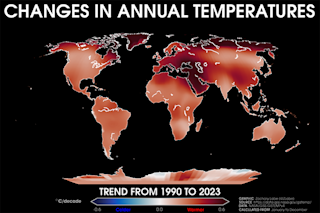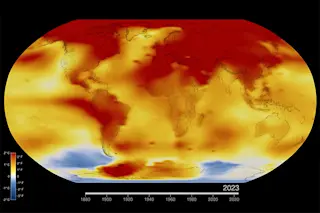Snowpack extent at winter's end in California's Sierra Nevada mountains was significantly more extensive in 2013 than in 2015, as seen in this animation of satellite images. The 2013 image was acquired by NASA's Aqua satellite on April 9, 2013; the 2015 image was captured by its sibling, the Terra satellite, on April 4, 2015. (Images: NASA Worldview. Animation: Tom Yulsman) Exceptionally high temperatures, partly resulting from humankind's influence on the climate, was the primary cause of record-low snowpack — a "snow drought" — in the westernmost United States last year. That's the conclusion of a study published in the journal Geophysical Research Letters. We usually think of drought as meaning a lack of precipitation. But in the winter of 2014/2015, precipitation in Oregon and Washington was actually near normal levels. And while California continued to be unusually dry, the lack of precipitation that winter was not exceptional. Yet on ...
Human-caused global warming contributed strongly to record 'snow drought' across the westernmost U.S. in 2015
Discover how climate change impacts California's Sierra Nevada mountains, leading to record low snowpack and a snow drought.
More on Discover
Stay Curious
SubscribeTo The Magazine
Save up to 40% off the cover price when you subscribe to Discover magazine.
Subscribe












